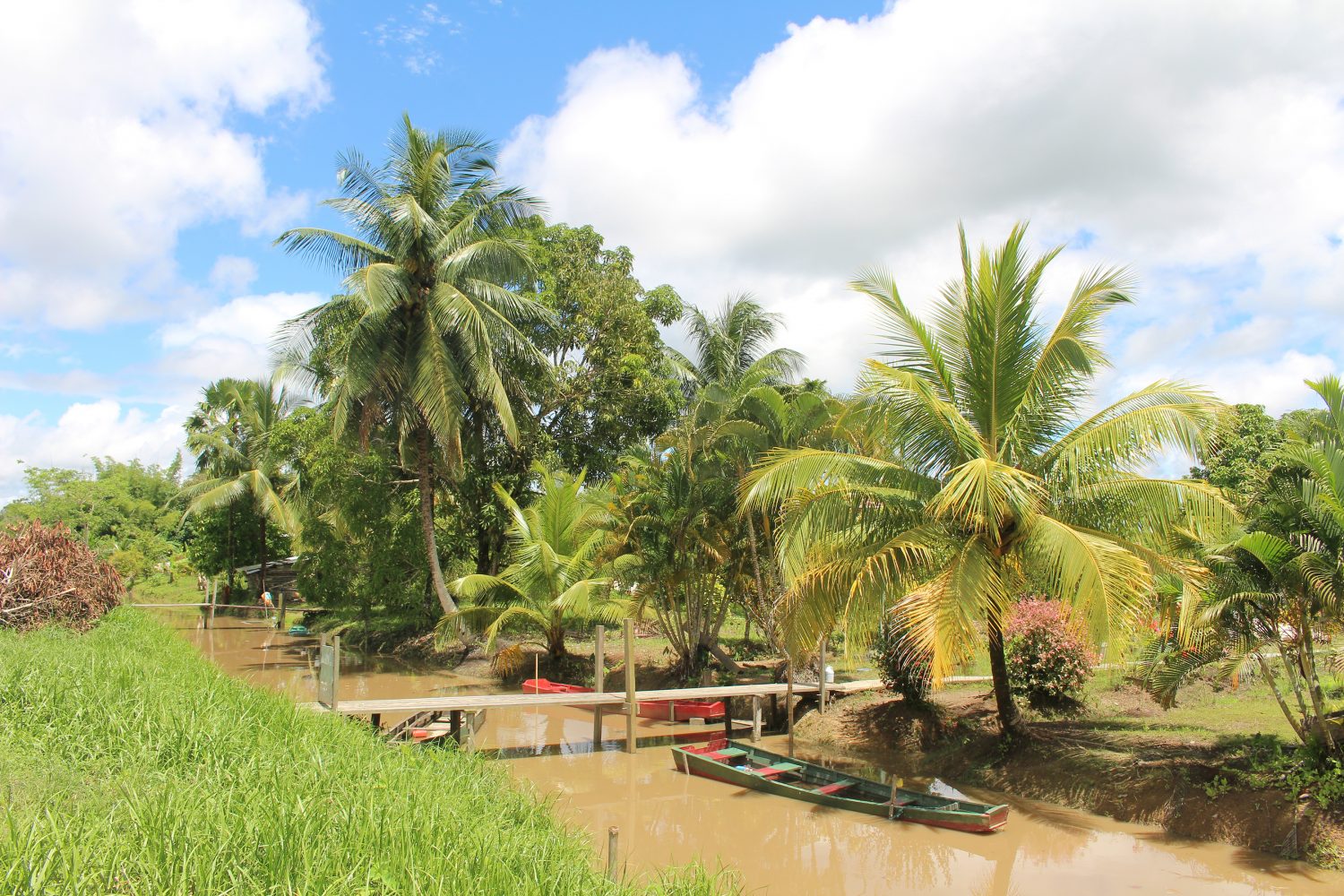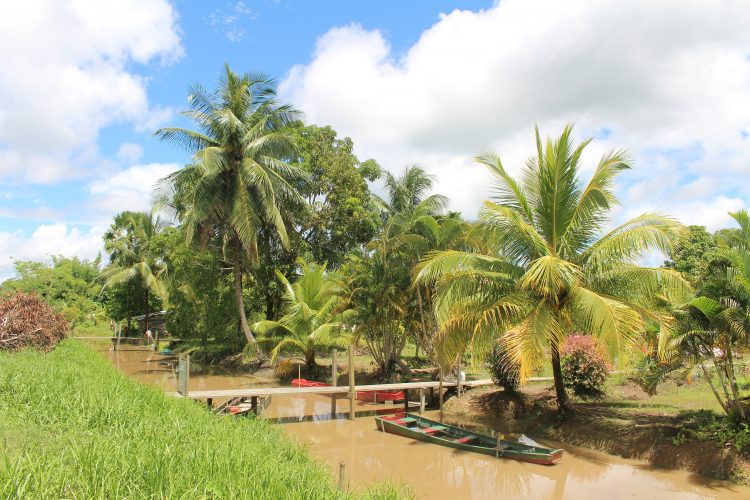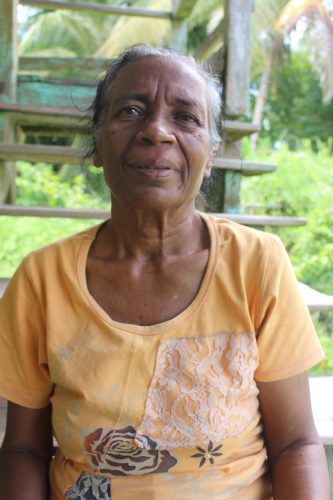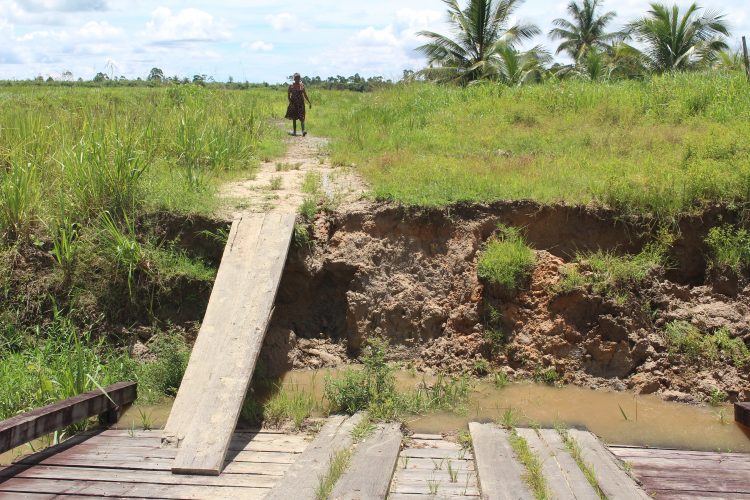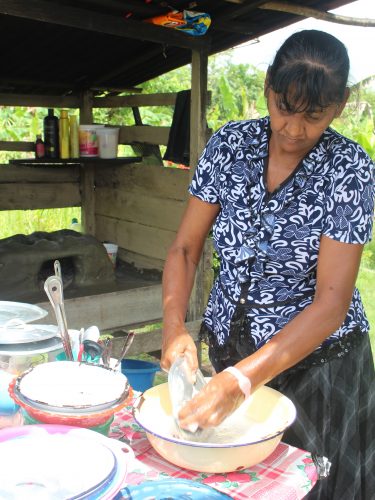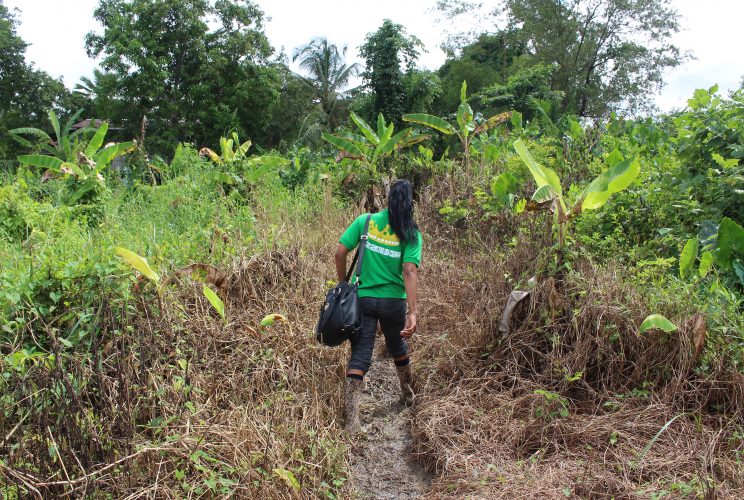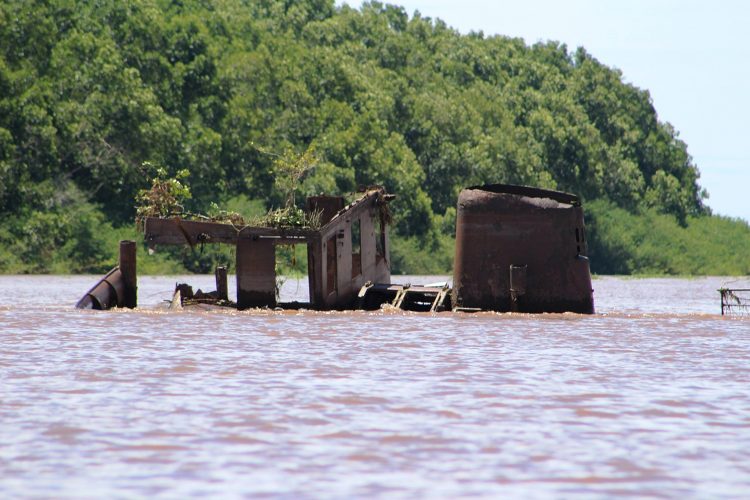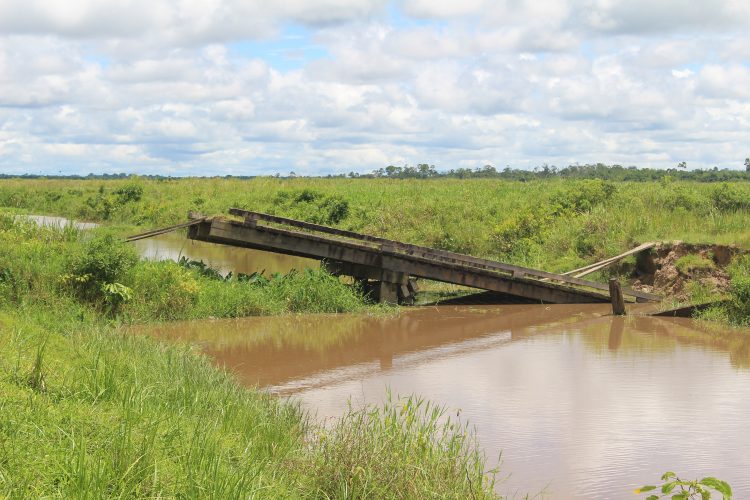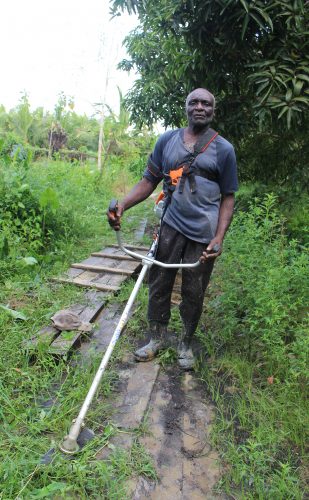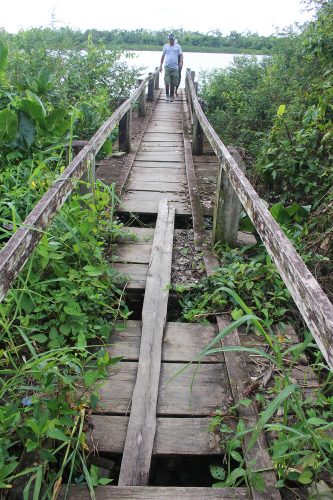La Harmonie, West Bank Demerara appears to be facing extinction; only three families reside there. But boatmen and another person said that most of the families live further up at a village called Maria’s Lodge (Calabash Alley) so this week’s feature is a combination of the two communities.
The villages are positioned close to each other and are situated approximately 14 to 15 miles from Vreed-en-Hoop.
The first attempt to visit La Harmonie was by road and it proved unsuccessful since even the four-wheel drive vehicle was forced to turn back because the muddy road which was filled with potholes too deep to go through. Very rarely would the area be accessed by road and when that occurs, it’s because the mode of transport used is a dirt bike or a tractor.
A week later, I got to the area by hiring a small engine boat; no boat plys that route aspublic transportation so that villagers who do not have their own boats are cut off. It was a 30-minute ride from Vriesland koker to La Harmonie as we were going against tide which was falling fast. We travelled to the sounds of shrill bird calls from among the mangroves growing along one bank of the Demerara River. On the other side, though no sounds were heard, it was easy to see vehicles speeding along the East Bank Demerara road. And on the lapping river at its border, boats and small ships bobbed at the waterfront. There is a landing at La Harmonie where boats can be moored.
The ground was wet from the rain that had fallen the night before and mud squished under my feet as I slowly and carefully made my way through the muddy track, past a man weeding with a brush cutter. On both sides of the track were fruits trees and cash crops: bora, corn, sugarcane, coconut, okra and guava.
What was supposed to be the main road turned out to be a slushy dam with overgrown weeds. Picking my way along it I soon arrived at La Harmonie Seventh-Day Adventist Church sitting on the opposite side of a canal; I later learnt that most of its members arrive by boat. Looking around, I saw nothing save for more trees and turned back.
Samuel Nelson was the man handling the brush cutter. The 68-year-old man was born at La Harmonie and so were his father and his grandfather, David Nelson, who had lived there all his life until his death at the age of 103. Their lives, he said, had always been strictly farming and he would have it no other way. “I plant mainly provision and we sell wholesale on Fridays at the Stabroek Market,” he said.
Nelson said living in La Harmonie has a few advantages which include, staying occupied on the farm, having healthy, organic food to eat and the breezy atmosphere.
Over the years, he has seen most of the villagers migrate, he said, adding that a big downside was not having a proper road. It is a project he wants to see finished as was it left incomplete at Maria’s Lodge due to weather conditions.
Nelson directed me to where the two other villagers lived. The road was impassable, so I took the boat. Disembarking at the school landing, I had passed earlier, I walked along a bridge with several boards missing. The school building houses both the primary and nursery levels. Recently, five Grade Six pupils who wrote the National Grade Six Assessment exam were awarded places at St Stanislaus College, St Joseph High, West Demerara Secondary and Friendship Secondary.
Just up the dam were the two houses; one was locked up as the owners were away and the owner of the other said he wanted no publicity.
I headed back to Maria’s Lodge, commonly known as Calabash Alley. This village, although not as bushy, was just as wet and flooded in some places.
Outside her house, 60-year-old Mahadai Jagrup washed the dishes, while her daughter, granddaughter and great-grand looked on from upstairs.
Jagrup is originally from a village beyond La Harmonie called Catherina; nobody lives there anymore. She moved to Maria’s Lodge so as to be closer to the Wales Estate backdam where she worked on the weeding gang. She has three children, all of whom are grown, 16 grandchildren and one great-grandchild. Her children, she said, attended La Harmonie Primary, her grandchildren are currently pupils there.
Her daughter shared that she and her siblings walked to school in the dry season but when it rained, they went by boat. After they would have completed the primary level they left to live with relatives on the East Coast Demerara where they attended Bladen Hall Secondary. Most children from the village did this as schools in Georgetown and West Bank of Demerara are difficult to get to and from in one day; some travel home only on weekends. Some children who attend schools on the lower East Bank Demerara, have relatives drop them over and return for them in the afternoons.
In Maria’s Lodge, villagers live about two or three lots away from each other. “The place nice, it quiet…. Nah get no problem with nobody; everybody live nice. I like everything about here,” Jagrup said.
Every house she continued, has its their own boat and landing. Once a month she and her grandchildren would cross the river, moor their boat at Land of Canaan and take a bus from there to the city where they would purchase groceries and greens and head back.
Almost at the start of the village Chandrouttie Sanichar was getting her pot going upstairs. Limping downstairs, she sat and exposed a bandaged knee. She explained that she had fallen on the stairs resulting in her injury and now uses a stick to keep her balance.
Now 66, Sanichar arrived in Maria’s Lodge from Catherina Sophia when she was 15 years old, after marrying her husband Balgobin. Their union produced six children, none of whom live in the village.
“I like that you can plant here,” the woman said but now that she has aged and her husband is partially blind and deaf, she relies on neighbours travelling to the city to purchase items for her. The neighbours are rather nice, she said; they don’t wait for you to ask them to get you something. Instead, knowing how difficult it is to get to and from the village, they make it their duty to check and see if other villagers need anything.
Whenever someone in the village dies, she noted, relatives are offered a plot of land to bury their dead by the Adventist Church in La Harmonie. The dead, she said, would be transported by tractor, except in weather like this, when boats must be used.
Pregnant women usually leave the village a few weeks prior to their due date and stay at relatives so they can be closer to a hospital; they return once their babies are born.
With no electricity or potable water, the villagers use generators and make do with rainwater. These two necessary services are available at Free and Easy, three villages away. Jagrup said she and the other villagers would eagerly welcome electricity, potable water, street lights and a much needed road.
Asked about flooding, she said that when it rains, her yard is not flooded much just a little. However, a few years ago, the river used to overtop the dam. A drain was dug and the dam built higher, that has since stopped.
At beginning of the village, the bridge that connected Maria’s Lodge to Catherina Sophia has collapsed. Erosion was the cause of this. Two planks on either side of the bridge allow limited access.
Heading back to the boat, I ran into Afratt Narine, who had just returned from dropping his mother at the East Bank Demerara; she is to have surgery done on her eyes for cataract.
Narine was born in the village and currently does construction on the East Bank Demerara; he also farms. The life of farming, he said, started when he was nine years old. He would accompany his grandparents to the backdam, a mile and a half away. They planted mostly ground provision. The backdam is the reason many persons were not home when we arrived, he said. Walking to the backdam, he said, was possible but because of the difficulty many persons use their boats.
“This road that people make here ain’t got a proper foundation. When the dam did dig out, they didn’t fill it back sufficient and so when the heavy vehicles pass through, it sink. And now when the rain fall it does flood. Some part ah the road does got eight inches ah water. The road me nah think reach two years yet. Nobody nah come fuh she fuh help. Parts of the road already bushy; the bush joining back over the road. Some lil children does got to walk through there when dey going to school,” Narine stressed.
For electricity, he uses a generator which he says is expensive. He added that when the electricity poles were being put up at Free and Easy, Maria’s Lodge residents eagerly anticipated their turn but it never happened. He added that in the meantime, if they are offered solar panels, they would gladly accept as it would remove the generator expense.
Despite all of these issues, he loves his village and though at one time he had lived in Trinidad doing construction and could have stayed, he returned because the solitude and kindness he has grown accustomed to in Maria’s Lodge, is comparable to none.
